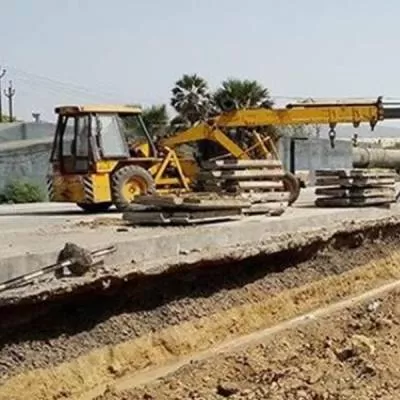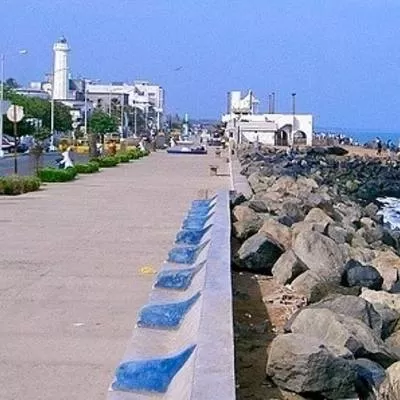Schedule a Call Back
Airport operators required to increase current capacity
Even as experts have warned of severe capacity crunch at 30 airports on account of rapid expansion in the number of airline passengers, what is the Ministry of Civil Aviation (MoCA) doing to decongest them?
Air traffic in India is witnessing a double-digit growth for the last four years. Our airports have witnessed unprecedented air passenger volumes in the recent years, with 260 million passengers in the year 2016-17 and 300 million passengers in the year 2017-18, an increase of 16.5 per cent over the previous year's traffic. The National Civil Aviation Policy (NCAP) 2016 targets an annual passenger capacity of 1.4 billion by 2027.
In order to bridge the gap between existing capacity and the targetted capacity, it is essential for the Airports Authority of India (AAI) and the existing private airport operators to increase capacity commensurately. Accordingly, AAI has assessed its requirements for upgrading of airports and planned for investment to the tune of Rs 367.37 billion for expansion of existing airports like Chennai, Lucknow, Guwahati, Jaipur, Varanasi, Bhubaneswar, Srinagar, Patna, Pune, Dehradun, Trichy, Imphal, and Vijayawada. The existing public-private partnership (PPP) airports, namely, Delhi, Bengaluru and Hyderabad, also have planned for expansion with a combined investment to the tune of Rs 350 billion. In addition, necessary approvals have been granted for the setting up of greenfield airports at important places like Jewar, Pune, Navi Mumbai, Bhogapuram, Mopa, Dholera, Hirasar, etc, which involve investment to the tune of Rs 660 billion.
The Regional Connectivity Scheme (RCS) is cited as the single biggest achievement of NCAP 2016, as it is likely to eventually result in the expansion of airport capacity in the country's hinterland. However, regional carriers have been unable to fully utilise the slots allocated to them. How do you propose to rectify this anomaly?
The primary objective of RCS-UDAN is to stimulate regional air connectivity by making it affordable. Promoting affordability of regional air connectivity is envisioned under RCS by supporting airline operators through concessions by the central and the state governments, and airport operators to reduce the cost of airline operations on regional routes or other support measures. It also looks at extending financial support through viability gap funding (VGF) to meet the gap, if any, between the cost of airline operations and expected revenues on such routes.
AAI, the implementing agency, had issued the letter of awards for 117 proposals during the first and second rounds of bidding under RCS-UDAN. They cover 56 unserved airports and 31 heliports, with all states being put on air connectivity map by virtue of UDAN. So far, flight operations have commenced from 28 RCS airports. Of these, 13 were underserved airports, while the remaining 21 were unserved airports. Flights are yet to commence from seven operational RCS airports including Cooch Behar, Durgapur, Jamshedpur, Kullu, Pantnagar, Kargil and Lilabari. 32 airports have been identified for upgradation and slot allocation. At the request of the Assam Government, the ministry's RCS cell launched the bidding for international air connectivity routes from Guwahati to Bangkok, Dhaka, Kathmandu, Kuala Lumpur, Singapore and Yangon. Bids for Bangkok and Dhaka have been received. However, the letter of award is pending due to non-receipt of consent and funds from the state government.
Bidding under the third round of RCS-UDAN is in progress and includes routes in the Northeast and water aerodromes. We have received 111 initial proposals from 15 bidders, and all have been opened for counter bidding. The proposals are likely to be awarded by January 2019.
Although foreign firms were permitted 100 per cent investment in brownfield airports in 2015, there has hardly been any noteworthy investment in the area. Does this call for a review of FDI in airport projects?
India's airport sector has attracted foreign investment to the tune of Rs 32 billion in Bengaluru Airport. Further, AAI has started the proposal of leasing six airports on PPP mode, and we expect foreign players to participate in the bidding.
What were the most significant achievements of MoCA in 2018, and your outlook for the Indian aviation sector in the year ahead?
I would say the most significant achievements of 2018 had been operationalisation of greenfield airports at Pakyong and Kannur, and the finalisation of concession for the Navi Mumbai Airport. Further, the policy document on Digi Yatra was approved by MoCA, and the proposed formation of special purpose vehicle (SPV) for implementation of the initiative by airport operators has also been approved. We had released the policy on Digi Yatra on October 4, 2018.
AAI has assessed its requirements for upgrading of airports and planned for investment to the tune of Rs 367.37 billion for expansion.'
'The existing PPP airports have planned for expansion with a combined investment to the tune of Rs 350 billion.'
'AAI had issued the letter of awards for 117 proposals during the first and second rounds of bidding under RCS-UDAN.'
- Manish Pant


Subscribe Now
Subscribe to our Newsletter & Stay updated
RECENT POSTS
Popular Tags
Folliow us











